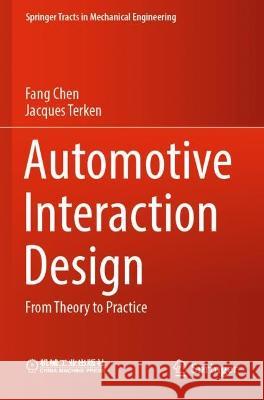Automotive Interaction Design » książka
topmenu
Automotive Interaction Design
ISBN-13: 9789811934506 / Angielski / Miękka / 2023
Automotive Interaction Design
ISBN-13: 9789811934506 / Angielski / Miękka / 2023
cena 724,58
(netto: 690,08 VAT: 5%)
Najniższa cena z 30 dni: 655,41
(netto: 690,08 VAT: 5%)
Najniższa cena z 30 dni: 655,41
Termin realizacji zamówienia:
ok. 22 dni roboczych
Dostawa w 2026 r.
ok. 22 dni roboczych
Dostawa w 2026 r.
Darmowa dostawa!
This book focuses on the design of the in-car human–machine interface (HMI) and the design-relevant psychology. It combines a design perspective with an applied theoretical perspective. The design perspective informs the reader about how to set up a design process that puts users at the centre of the design process. The theoretical perspective provides the reader with an understanding of concepts from perception and cognitive psychology, supporting the decision-making in the design process. This is an ideal book for automotive engineers and practitioners in the automotive industry who face the challenge of designing information and entertainment systems, advanced driver assistance systems (ADAS) and automated driving systems (ADS), and the associated HMIs.











